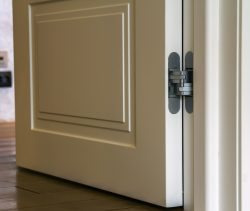5 Smart Fixes for Window and Door Replacement London
October 15, 2025 10:16 pmCold corners. Rising heating bills. That sneaky breeze around the sofa. Fall in London, Ontario is the time to stop drafts before winter settles in. This guide gives you five smart fixes—from quick DIY steps to full window and door replacement—so your home feels warmer and costs less to heat.
Intent: If you’re searching “window and door replacement London,” you want practical steps now and clear signals for when replacement is the smart move. You’ll find both below, plus links to local product pages.
Fix #1 — Seal the obvious leaks fast
Weatherstripping, door sweeps, and frame caulkingStart with the usual suspects: worn weatherstripping, tired door sweeps, and unsealed trim. Replacing perimeter seals on operable sashes and doors is inexpensive and pays off immediately. Use high-quality foam, vinyl, or silicone weatherstripping sized to your gap, and fit an adjustable sweep or threshold at exterior doors to block floor-level air ingress. Government home-efficiency guidance is clear: comprehensive air-leakage control means identifying and sealing as many paths as possible with weatherstripping and caulking.
Apply paintable exterior-grade caulk at joints where casing meets siding or brickmould. Indoors, a tidy bead around interior trim can cut micro-leaks without changing aesthetics. If you’re planning a future replacement, sealing now still makes sense; you’ll recover the small cost in comfort.
Where drafts hide (outlets, penetrations, attic access)
Homeowners often blame the window while the leak lives nearby. Common culprits include wall outlets, light fixtures, plumbing and cable penetrations, attic hatches, and even open fireplace dampers. Sealing these with gaskets, foam, and covers reduces the “stack effect” that pulls cold air through your walls. Reputable building and homeowner resources list these spots as frequent draft sources worth fixing early.
Quick check: on a breezy day, hold an incense stick or tissue near suspect areas. Movement shows air pathways you can seal today and flag for your installer later. (NRCan’s homeowner materials describe smoke-based draft locating as a simple diagnostic.)
Fix #2 — Tune the fit: hinges, latches, and thresholds
When an adjustment solves the draftNot every draft requires new units. Loose hinges, misaligned latches, and low thresholds can open millimetre-wide gaps that feel like a gale at 6 p.m. Re-set hinge screws in solid wood (toothpick-and-glue tricks are temporary), shim strike plates for tighter latch engagement, and level adjustable thresholds so door sweeps actually seal. These adjustments pair with fresh weatherstripping to restore a snug fit around many modern doors and operable windows, reducing leakage that would otherwise undercut heating efficiency. Authoritative Canadian guidance on air-leakage control includes improving door seals and thresholds as a standard measure.
When hardware upgrades are worth it
If handles wobble or multi-points don’t engage fully, consider hardware replacement (locks, keepers, rollers on sliders). Better compression at the latch often equals better air seal. Ask your pro whether upgraded hardware is compatible with your existing frame; if not, put that money toward a new door slab or unit.

Fix #3 — Upgrade glass and frames the right way
When sealing and tuning still leave you cold, look at glazing and frame performance.Low-e coatings, ER/U-factor basics
ENERGY STAR-certified windows and doors use low emissivity (low-e) coatings and insulated frames to reduce heat loss in winter and heat gain in summer. In Canada, windows/doors must meet performance thresholds (U-factor/Energy Rating and air-leakage limits) to earn the mark. Lower U-factor means less conductive heat loss; a higher Energy Rating (ER) weighs solar gains and airtightness for our climate.
NRCan notes that low-e glass can reduce winter heat loss and summer heat gain by up to 50%, which directly improves comfort near the glass and helps the whole room feel warmer. Choose coatings and gas fills (argon, sometimes krypton) appropriate for orientation and shading.
Cut condensation risk in winter
That persistent fog between panes usually signals a failed insulated glass unit (IGU). Even surface condensation on interior glass can indicate cold glass temperatures from poor performance or high indoor humidity. Canadian housing guidance links winter condensation on cold surfaces to mould risk if moisture persists on sills and walls—another reason to pair air sealing with better windows.
If your panes are failed or frames have softened, replacement is more cost-effective than piecemeal fixes. Explore McCallum’s windows page for options that match your home’s style and budget.
Fix #4 — Prioritize pro installation (when replacement is best)
Signs repair won’t cut itConsider full window and door replacement when you see:
Persistent drafts after new seals and adjustments
Rot, warping, or water staining around frames/sills
IGU failure (fog between panes) or cracked glass
Security issues from failing latches or frames
Excessive maintenance or paint failure that repeats yearly
At that point you’re paying for comfort losses twice—on your utility bill and in repeated patchwork. A professional replacement with the right product and installation method brings the long-term fix you hoped caulking would deliver.
What a good replacement quote includes
Ask for a written quote that lists: frame material and series, low-e specification, gas fill, spacer type, U-factor/ER values, air-leakage rating, installation method (retrofit vs. full-frame), flashing details, and workmanship + manufacturer warranties. ENERGY STAR Canada technical specs emphasize U-factor/ER performance and air-leakage limits—use those numbers to compare apples to apples.
Doors matter too. Exterior doors with insulated cores, tight sill systems, quality weatherstripping, and proper latch engagement stop major drafts at ground level. Explore McCallum’s doors to see durable, airtight options for entries and patios.

Fix #5 — Plan for light and comfort (bow windows London)
Shorter fall days make daylight precious. Well-placed bow windows London homeowners choose add light and a sense of space without inviting drafts—provided the unit is high-performance and installed to spec. Use orientation-appropriate glass: higher solar-gain coatings can warm south-facing rooms in winter, while low solar-gain glass may suit west exposures that overheat in shoulder seasons. (NRCan cautions that very high SHGC values on south/west facades can cause overheating if glass areas are large.) Seat-height sills and insulated benches keep the reading nook cosy when the temperature drops.Putting it all together for London homes
Seal now to harvest the easy comfort gains. 2) Tune fit and hardware for tight closures. 3) Upgrade glass where performance is poor. 4) Replace units that are beyond repair, with pro installation and verified ENERGY STAR performance. 5) Design for daylight so winter feels brighter without the chill.For a homeowner-friendly overview of common draft sources (and fixes) that complements this guide, see The Spruce’s contractor-informed checklist. The Spruce
Ready to stop drafts for good? Talk to a local team that installs for Ontario’s climate and stands behind the work. Start here: Windows • Doors.
